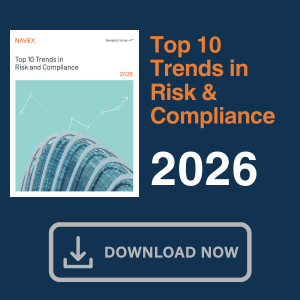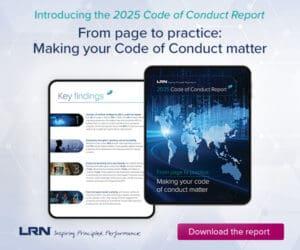The SEC has already or may yet update its periodic reporting requirements on a number of fronts. Most of these relate to ESG, KPI and non-GAAP disclosures. Meanwhile, COVID-19 continues to require dynamic responses.
Public companies have been monitoring and rapidly adapting to a wide array of developments impacting periodic reporting disclosure practices over the last year. Several new SEC rules went into effect during this time. These include various amendments to Regulation S-K, such as the addition of a new human capital disclosure requirement that became effective in November 2020, as well as revisions to MD&A disclosure requirements that public companies may now apply on a voluntary basis ahead of an August 2021 effective date.[1] In light of the fact that calendar year-end companies gave consideration to these amendments in connection with recent Form 10-K filings, this article will highlight the following four key areas impacting periodic reporting for public companies for the remainder of 2021:
- Evolving disclosure considerations arising from the COVID-19 pandemic.
- The renewed focus of the SEC on climate-related considerations and other issues related to environmental, social and governance (ESG) matters under the Biden administration.
- The SEC’s key performance indicator (KPI) guidance from early 2020.
- The perennial topic of non-GAAP disclosures.
Continuing Evolution of COVID-19 Disclosures
A key question for public companies in connection with their periodic reporting for the remainder of 2021 is how improving public health conditions related to the COVID-19 pandemic may alter the disclosure of pandemic-related matters included in recent periodic reports, particularly in relation to the following:
- COVID-19 MD&A Executive Summary. It has been common for public companies to include a dedicated COVID-19 discussion as a lead-in section to the MD&A. From an MD&A perspective, assuming that conditions associated with the COVID-19 pandemic continue to improve, public companies will want to update their COVID-19 MD&A discussion to reflect the effect of such improving conditions. We expect that the length of COVID-19 MD&A discussions will decrease for many public companies as a result. Conversely, if any business(es) of public companies has benefited from the pandemic, these companies will need to consider providing MD&A disclosure regarding potential adverse impacts which may arise from an improvement in pandemic-related health conditions. Overall, given the ongoing and still-unpredictable nature of the pandemic, we expect that many public companies will continue to include some form of stand-alone discussion of COVID-19 matters in their MD&A at this time.
- Focus on Material Trends. The COVID-19 pandemic has compelled public companies to focus on trends and forward-looking considerations in their COVID-19 disclosure. This is in contrast to the pre-pandemic paradigm under which a significant percentage of public companies largely focused their MD&A disclosures on a discussion of historical information. In this regard, we believe that, as the impacts of the pandemic lessen, public companies that historically have not included an executive summary at the start of their MD&A and/or have included limited MD&A trends disclosure may want to consider whether to ultimately make their COVID-19 section more dynamic and trends-focused going forward. This could include evolving this section into a stand-alone executive summary. It could also be an outlook section that highlights key trends and developments in a manner that enhances MD&A disclosure and is consistent with the SEC’s preference for layering (i.e., highlighting key information first), along with the requirement under SEC rules to disclose material trends in the MD&A.
- COVID-19 Risk Factor Updates. Many public companies included an up-to-date COVID-19 risk factor in Form 10-Qs filed throughout 2020 in light of the requirement to disclose “material changes” to risk factors previously disclosed in Form 10-Ks. If the impacts of COVID-19 decrease in importance during 2021, we believe that, among the public companies that included this Form 10-Q risk factor disclosure, many may elect to no longer include a COVID-19 risk factor in their Form 10-Qs filed during 2021. Instead they may conclude that the optimal location for discussing improving COVID-19 conditions is in the MD&A rather than through including a risk factor update.
- Period-to-Period Comparison. Under SEC rules applicable to MD&A disclosure, public companies are required to provide an analysis of their results of operations for current year periods against specified prior historical periods. However, public companies may determine that the most relevant quarterly comparison for MD&A in Form 10-Qs filed during 2021 is not the prior sequential quarter or the prior year calendar quarter. (These are the relevant periods of comparison under SEC rules. Registrants can choose between either of these prior periods for purposes of comparison.) Companies may instead prefer an earlier, pre-pandemic period. For instance, some public companies may consider providing additional disclosure (both in their MD&A as well as in earnings release materials) comparing results from quarterly periods during 2021 against results from corresponding quarterly periods in 2019.
ESG-Related Disclosures in Focus
There has been a dramatic expansion in the level of focus on ESG-related disclosure matters over the last year, and it is clear that the SEC under the Biden administration will be heavily focused on ESG disclosure. For example, Acting SEC Chair Allison Herren Lee stated in February 2021 that the Division of Corporation Finance would enhance its focus on climate-related disclosure, and the SEC issued a public statement in March 2021 soliciting public input on potential revisions to existing climate-related disclosure requirements (with public comments due by June 13, 2021). Moreover, the SEC announced in March 2021 the creation of a Climate and ESG Task Force within the Division of Enforcement to identify material issues associated with the climate risk disclosures (or lack thereof) of public companies.
Read more about the SEC’s outlook on ESG
Public companies should monitor future rule-making and other SEC-related developments with respect to climate-related and other ESG disclosure matters and assess the sufficiency of their existing disclosure in this area (including in relation to the SEC’s 2010 interpretative guidance on climate-related disclosure). In this regard, disclosure areas to consider from a periodic reporting perspective include the following:
- Assessing climate-related disclosure in connection with the requirements to disclose material legal regulations (in the business section of Form 10-Ks) and material risks and/or risk factor updates (in the risk factor section of periodic reports).
- Considering – at least for public companies in certain industries – whether any climate or environmental-related topics merit disclosure in the MD&A in periodic reports in light of the heightened regulatory focus and increased investor attention on this area.
- Ensuring consistency between ESG-related disclosures included in periodic reports and other SEC filings, in comparison to ESG-related disclosures made outside of the scope of SEC filings, such as in sustainability reports, similar ESG-related reports or disclosures included on company websites.
- Evaluating the sufficiency of controls and procedures around ESG-related disclosures, regardless of whether the disclosures have historically been included in SEC filings.
Key Performance Indicators – Cue the Comments
The SEC issued guidance in early 2020 related to disclosure of KPIs in MD&A.[2] Invoking existing rules and MD&A guidance, the SEC reminded companies about the need to disclose key variables and factors that management uses to manage its business, to the extent they are material to investors. In those disclosures, companies should present a narrative that allows investors to see the company through management’s eyes, with the indicators presented generally not deviating materially from those used to manage the company or make strategic decisions. The guidance also reiterated the importance of maintaining effective controls and procedures around such disclosures, providing clear definitions of any KPI and its calculation methodology, and disclosing key estimates and assumptions underlying such indicators.
The SEC staff has issued a number of comments based on this guidance in the past 12 months, from which several instructive themes emerge:
- If KPIs are discussed in earnings materials, including earnings calls, identify and discuss those KPIs in periodic reports if they are used to manage and promote a company’s business.
- When companies include qualitative disclosures in their periodic reports to address measures and trends that impact their revenue or results of operations, consider identifying and quantifying the KPIs used to track such measures and trends, if any.
- Distinguish, where appropriate, between KPIs that are non-GAAP financial measures and metrics to which the non-GAAP rules do not apply, such as gross bookings, and adhere to the relevant disclosure framework for each type of measure.
- Absent changes in management of the business, continue disclosure in Forms 10-Q of the same KPIs that are disclosed in the Form 10-K.
Non-GAAP Financial Measures – Last But Not Least
As a result of ongoing SEC and investor focus on the use of non-GAAP financial measures over the past year,[3] it is important to maintain robust cross-functional controls and procedures around the non-GAAP disclosure process, whether those measures are disclosed in SEC filings and earnings releases or through other avenues like investor presentations and website disclosures. The SEC commissioners and staff have repeatedly emphasized this point, along with the value of having active audit committee engagement with respect to non-GAAP financial measures, including ensuring committee familiarity with how management intends to use those measures and whether they are consistently prepared and presented from period to period.[4] Private plaintiffs have also been monitoring company disclosures regarding technical compliance with the SEC’s non-GAAP financial measures rules, with some recent instances of plaintiffs alleging noncompliance with such non-GAAP rules as part of a broader claim alleging violation of anti-fraud rules.
A brief compliance checklist can play a critical role in the control process, particularly if perspective on these matters is solicited across the legal, financial reporting and investor relations functions when a new non-GAAP financial measure, or adjustment thereto, is under consideration. The following topics and questions, which we have derived from SEC comment letters and remarks, could be included in such a checklist:
- Identification and purpose:
-
- Has the company evaluated all financial measures it plans to disclose publicly, including guidance, to ensure all non-GAAP financial measures have been identified? In our experience, non-GAAP financial measures may inadvertently be described as GAAP measures or otherwise have names that belie the fact that they are not presented in accordance with GAAP.
- How is each non-GAAP financial measure useful in managing and/or evaluating the company’s business? Is the publicly articulated purpose for disclosing the measure consistent with internal rationale for its use?
- Definition and calculation:
-
- Has the company confirmed the permissibility of the types of adjustments used – and expected to be used in future periods – in calculating non-GAAP financial measures, including with respect to the type of filing in which the measures are being, or will be, presented? For instance, are there adjustments that have the effect of impermissibly altering underlying accounting principles, such as timing of revenue recognition, rather than merely including or excluding amounts from GAAP?
- Do public disclosures clearly describe the nature of adjustments being made and are they sufficiently flexible to capture similar adjustments that may arise in future periods?
- Have adjustments been made consistently across the periods presented and have any changes to adjustments included in the calculation of non-GAAP financial measures in comparison to prior filings been adequately highlighted and explained?
- Presentation:
-
- Is the non-GAAP financial measure accompanied by the most directly comparable GAAP measure and, in SEC filings and earnings releases, does the GAAP measure have equal (really, greater) prominence? As part of this analysis, evaluate the location of the two measures within the disclosure document as well as their descriptive characterization.
- Has a reconciliation to the most directly comparable GAAP measure been provided in accordance with SEC rules?
The authors thank Lauren Brown, an associate at Bass, Berry & Sims, PLC, for her assistance in connection with this article.
[1] Effective November 9, 2020, the SEC amended Item 101 (Description of Business), Item 103 (Legal Proceedings), and Item 105 (Risk Factors) of Regulation S-K. The SEC subsequently adopted revisions to Item 301 (which eliminated the requirement to include a five-year selected financial data table in Form 10-Ks), Item 302 (which replaced the current requirement to include quarterly tabular disclosure in Form 10-Ks) and Item 303 (which made various revisions to MD&A disclosure requirements) of Regulation S-K effective (on a voluntary basis) on February 10, 2021, with a mandatory effective date on August 9, 2021 (i.e., applicable to the first fiscal year of a company ending on or after such date). These rules allow early adoption of the Item 301, 302 and 303 amendments, provided any amended item is adopted in its entirety. A significant percentage of public companies filing Form 10-Ks for the year ended December 31, 2020, early adopted the updated versions of Items 301 and 302, taking into account the fact that these revisions generally eliminated or reduced disclosure. In contrast, while some public companies early adopted Item 303, this approach was less common as the result of the more extensive and multi-faceted nature of the changes made to Item 303.
[2] Release Nos. 33-10751, 34-88094, Commission Guidance on Management’s Discussion and Analysis of Financial Condition and Results of Operations (Effective Feb. 25, 2020).
[3] PwC, In the Loop, To GAAP or to non-GAAP COVID-19: What You Should Know (Jan. 2021) (stating that nearly 95 percent of the S&P 500 used at least one non-GAAP financial measure in their disclosures during 2020, up from about 75 percent in 2016); PwC, SEC Comment Letter Trends (2020) (identifying non-GAAP financial measures as the most common topic of SEC comment letters on Forms 10-K and 10-Q for the 12 months ended September 30, 2020).
[4] E.g., Jay Clayton, Sagar Teotia, & William Hinman, Joint Statement on Role of Audit Committees in Financial Reporting and Key Reminders Regarding Oversight Responsibilities (Dec. 2019).



 Stephanie Bignon is an Assistant General Counsel at Delta Air Lines, Inc., where she advises primarily on securities compliance, capital markets and corporate governance matters. Prior to joining Delta in 2020, Stephanie was a member of the corporate practice at Covington & Burling LLP, where she advised public and private companies across industries on a range of complex securities, governance and finance issues. Stephanie is also a certified public accountant. Before law school, she worked as a public company auditor at Grant Thornton LLP and in external financial reporting at Delta.
Stephanie Bignon is an Assistant General Counsel at Delta Air Lines, Inc., where she advises primarily on securities compliance, capital markets and corporate governance matters. Prior to joining Delta in 2020, Stephanie was a member of the corporate practice at Covington & Burling LLP, where she advised public and private companies across industries on a range of complex securities, governance and finance issues. Stephanie is also a certified public accountant. Before law school, she worked as a public company auditor at Grant Thornton LLP and in external financial reporting at Delta. Kevin Douglas is chair of the Corporate & Securities Practice at
Kevin Douglas is chair of the Corporate & Securities Practice at 






